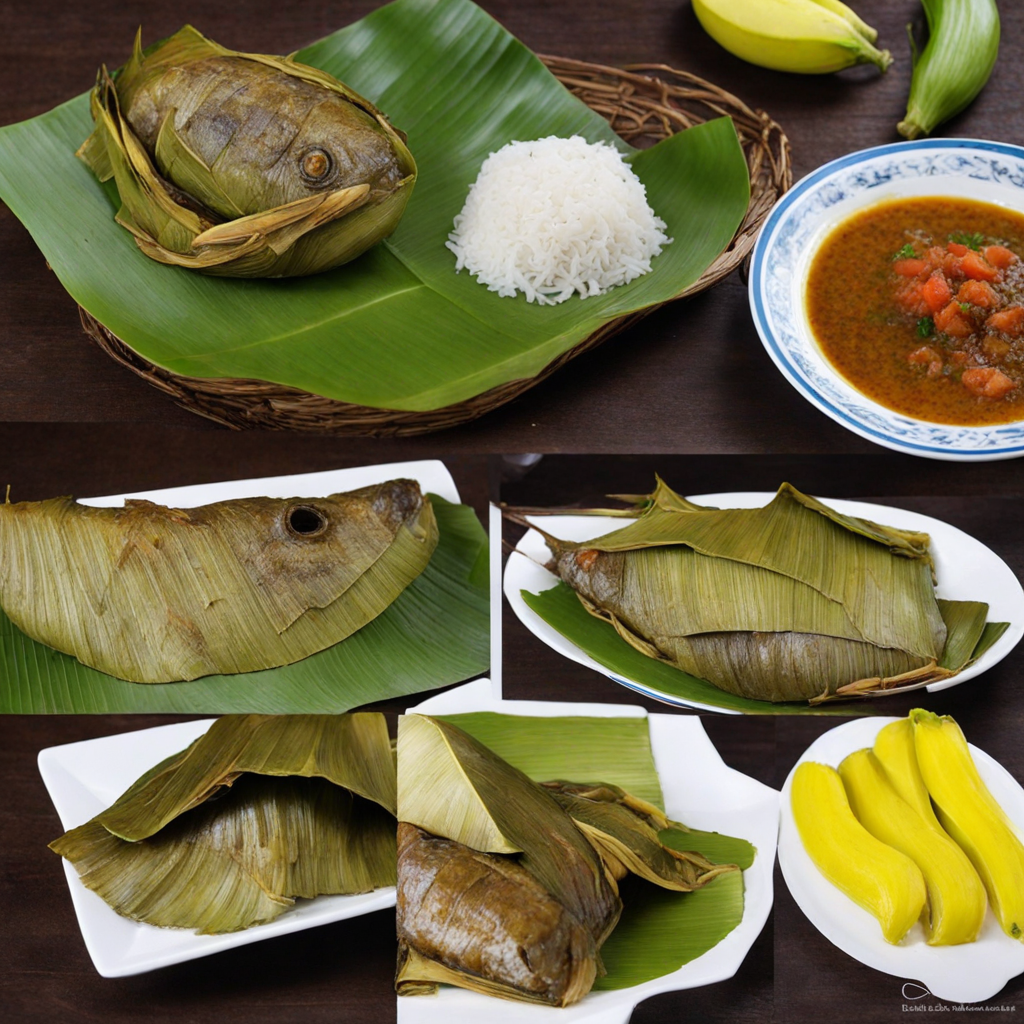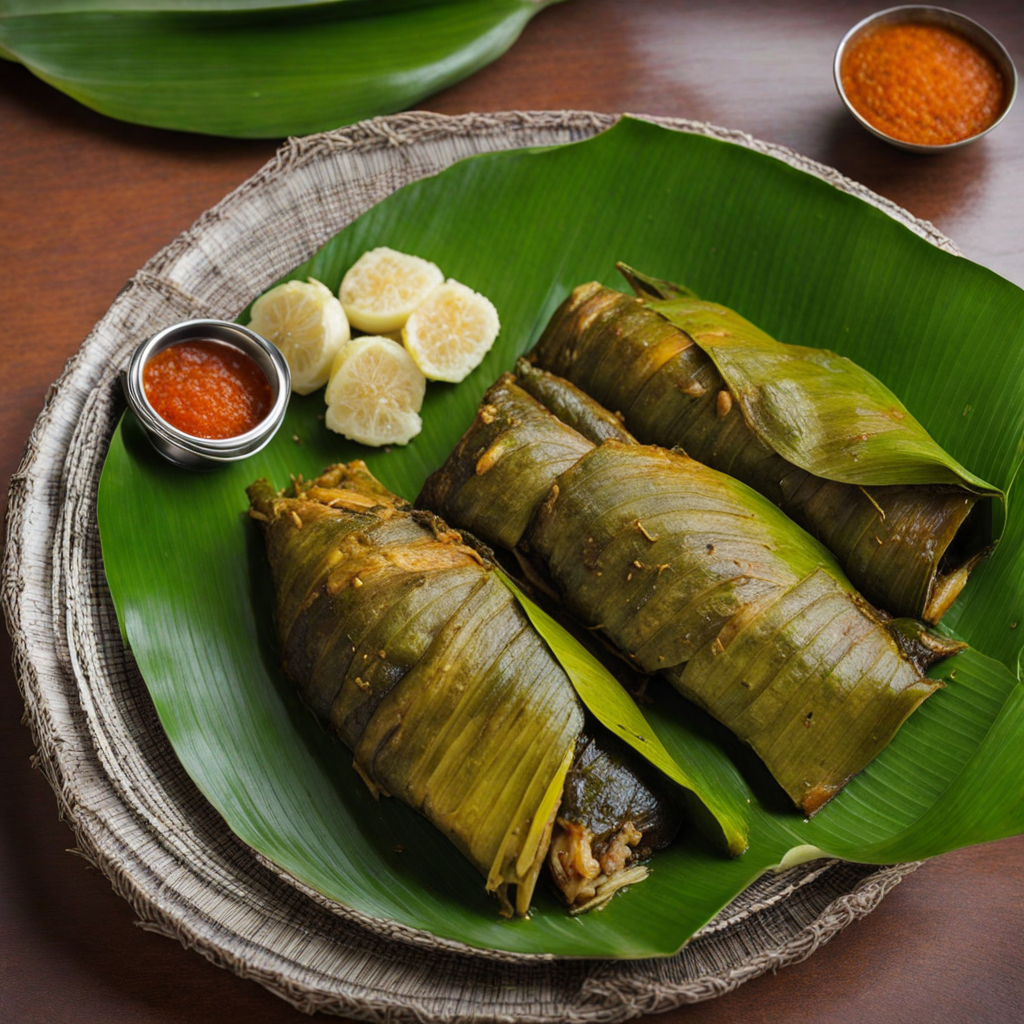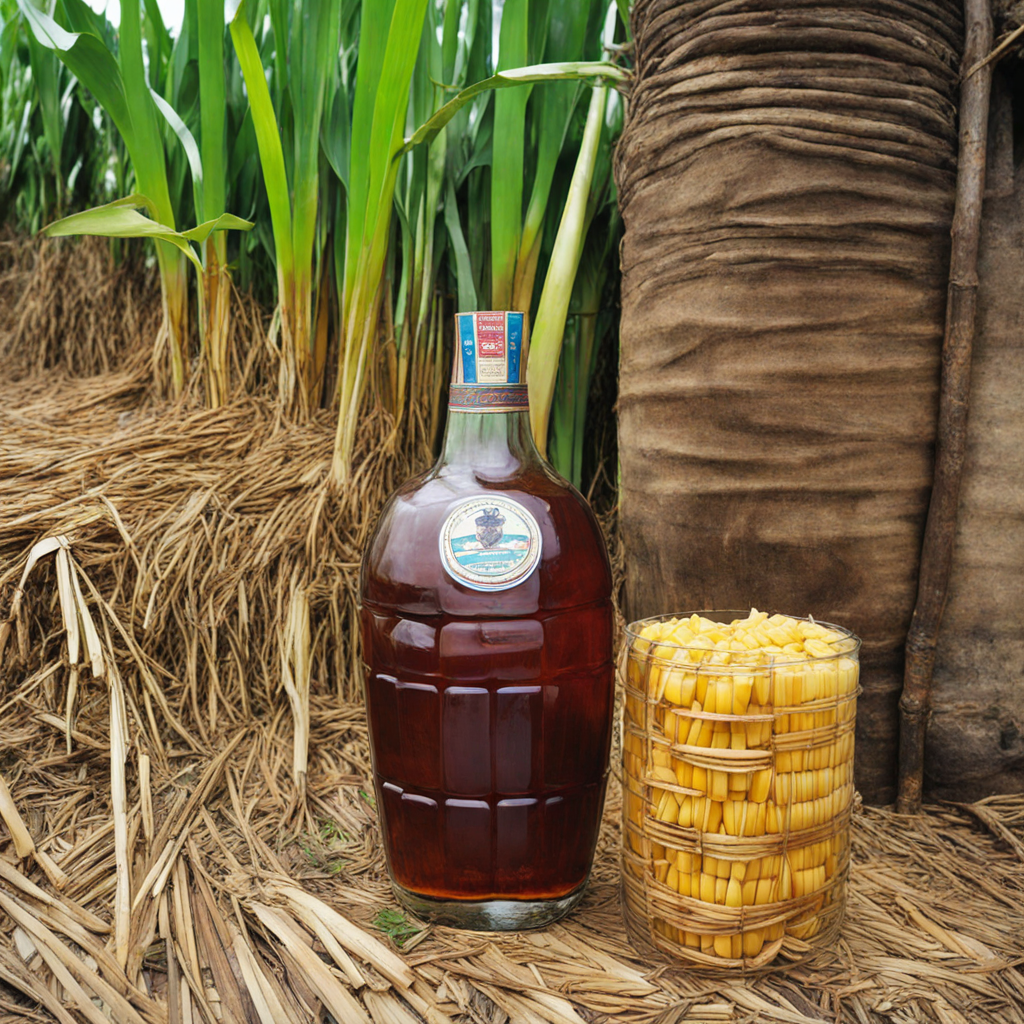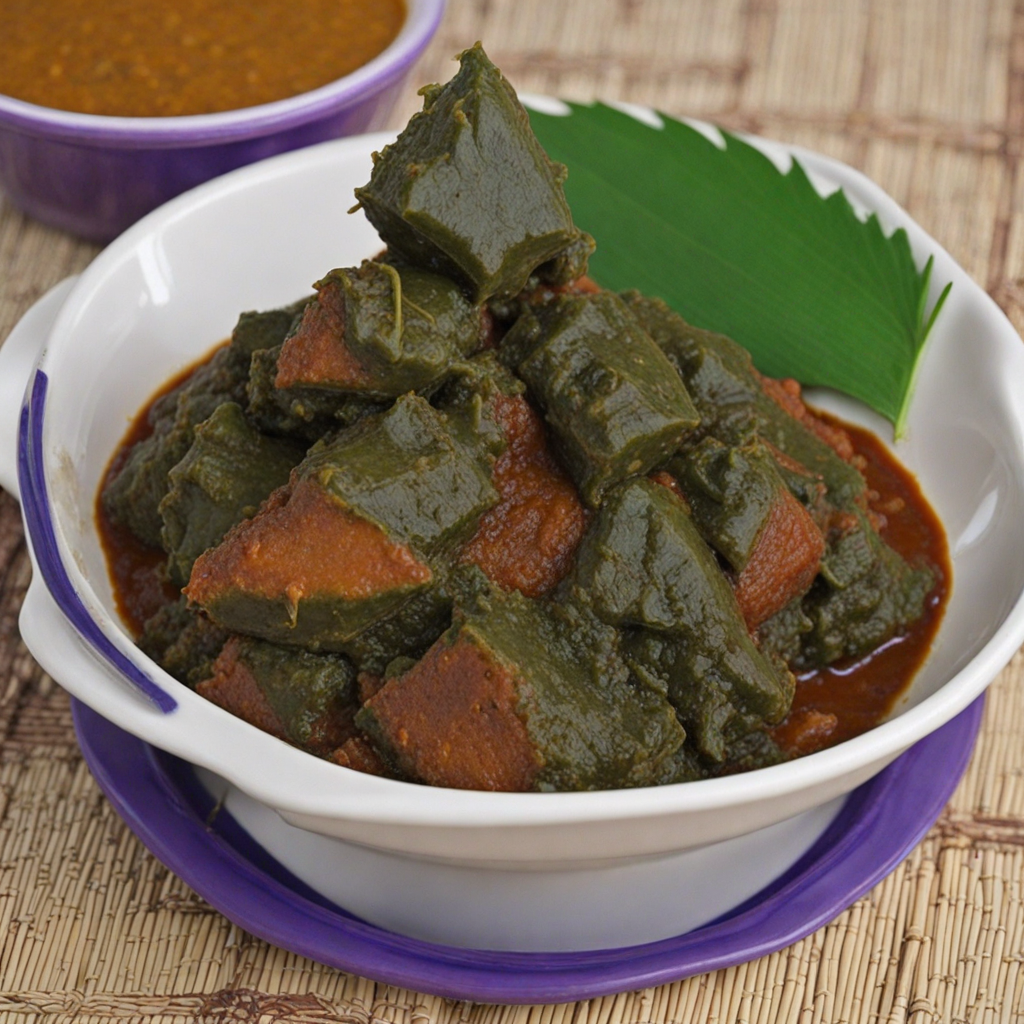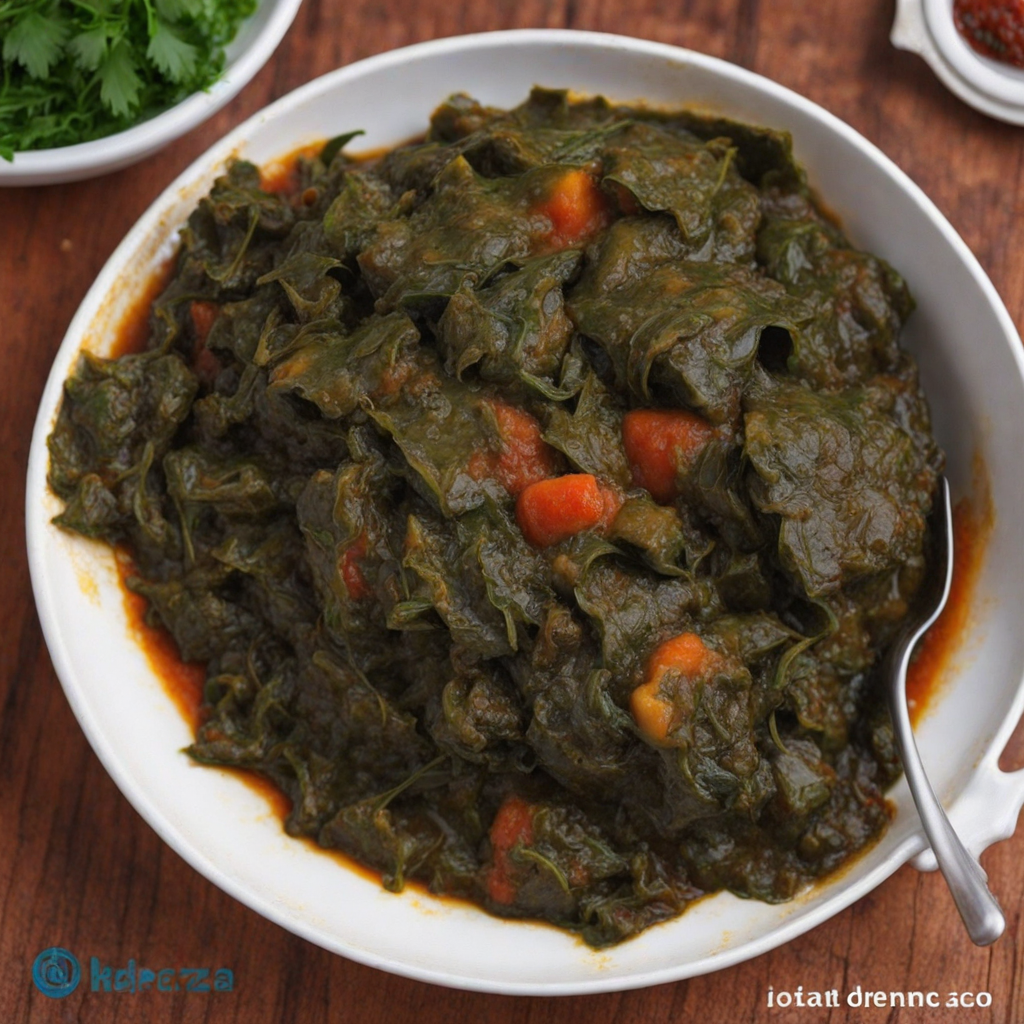Maboke
Maboke is a traditional dish hailing from the Democratic Republic of the Congo, celebrated for its unique preparation method and rich flavors. This delightful delicacy is primarily made from fish, commonly tilapia, which is expertly seasoned with a blend of local spices and herbs. The fish is then wrapped in banana leaves, a technique that not only infuses the dish with a subtle earthy aroma but also helps to retain moisture during cooking. The result is a tender and flavorful fish that is both succulent and aromatic, offering a taste experience that is deeply connected to the region's culinary heritage. The cooking process of Maboke is just as intriguing as its ingredients. Once wrapped in banana leaves, the fish is often steamed or grilled, allowing the heat to penetrate the layers and cook the fish evenly. This method preserves the fish's natural flavors while the banana leaves impart a gentle sweetness. Accompanying the fish are typically starchy sides such as plantains, cassava, or rice, which complement the dish's savory profile and provide a satisfying balance to the meal. The combination of textures and flavors creates a delightful contrast that is sure to please the palate. Maboke is not just a dish; it is a communal experience often enjoyed during gatherings and celebrations. Sharing this meal with family and friends fosters a sense of togetherness, reflecting the Congolese culture's emphasis on community. As you delve into the world of Maboke, you will discover layers of flavor and tradition that tell a story of the land and its people, making it a must-try for anyone eager to explore new culinary horizons.
How It Became This Dish
The History of Maboke: A Culinary Gem from the Democratic Republic of the Congo Maboke, a traditional dish from the Democratic Republic of the Congo (DRC), is not just a culinary delight; it is a reflection of the rich cultural heritage and agricultural practices of the Congolese people. The dish, primarily made from fish, is known for its unique preparation method and is often enjoyed during communal gatherings, celebrations, and family meals. Its origins, cultural significance, and development over time weave a fascinating narrative that connects the past with the present, highlighting the resilience and adaptability of Congolese cuisine. #### Origins of Maboke Maboke's origins can be traced back to various ethnic groups residing in the DRC, particularly among the fishing communities along the Congo River and its tributaries. The river itself has been a vital source of sustenance and transportation for generations, providing an abundance of freshwater fish. Species such as tilapia, catfish, and perch are commonly used in the preparation of Maboke, showcasing the local biodiversity and the importance of fishing in the region's economy and culture. The word "Maboke" is derived from the Lingala language, one of the national languages of the DRC. The term refers to the method of cooking fish by wrapping it in banana leaves, a practice that not only enhances the flavor but also reflects the resourcefulness of the Congolese people in utilizing the natural resources available to them. The use of banana leaves is significant, as the banana plant is ubiquitous in the DRC, providing food, shelter, and materials for various traditional crafts. #### Cultural Significance Maboke holds a special place in the hearts of Congolese people, symbolizing unity, hospitality, and the importance of community. The preparation and sharing of Maboke often serve as a social event, bringing families and friends together to celebrate milestones, such as weddings, birthdays, and religious ceremonies. The communal aspect of eating Maboke reinforces social bonds and fosters a sense of belonging among participants. The dish is not only a source of nourishment but also a means of preserving cultural identity. In a country marked by diverse ethnic groups, languages, and traditions, Maboke serves as a culinary emblem that transcends regional differences. It embodies the shared values and practices of the Congolese people, allowing them to connect with their heritage while simultaneously adapting to the changes brought about by globalization. #### Development Over Time The preparation of Maboke has evolved over the years, reflecting both traditional practices and modern influences. Historically, the dish was prepared using simple tools and methods passed down through generations. The fish would be seasoned with local spices and herbs, often mixed with vegetables like tomatoes, onions, and peppers. The wrapped fish was then cooked over an open fire, allowing the flavors to meld together while imparting a smoky aroma that is characteristic of traditional Maboke. With the advent of modernization and urbanization in the DRC, the preparation of Maboke has seen some changes. Access to new cooking technologies, such as gas stoves and electric ovens, has made the cooking process more convenient, although many still prefer the traditional method for its authenticity. Additionally, the availability of ingredients has expanded due to increased trade and globalization, leading to the incorporation of new flavors and techniques. For instance, some contemporary versions of Maboke may feature marinades that include soy sauce, garlic, or citrus, showcasing the influence of other culinary traditions. Despite these changes, many Congolese people remain committed to preserving the traditional aspects of Maboke. Local markets continue to thrive, offering fresh fish and the essential ingredients needed for this beloved dish. The practice of cooking Maboke in banana leaves is still prevalent, as it is considered an integral part of the dish's identity and flavor profile. #### Global Recognition In recent years, Maboke has gained recognition beyond the borders of the DRC, thanks in part to the growing interest in African cuisine worldwide. Culinary enthusiasts and food bloggers have begun to explore Congolese dishes, bringing attention to the richness of the country's culinary heritage. This newfound recognition has led to a revival of interest in traditional cooking methods and ingredients, providing opportunities for younger generations to connect with their cultural roots. Moreover, the global push for sustainable eating practices has also fostered interest in dishes like Maboke, which emphasize the use of local and natural ingredients. The dish's reliance on fish from local rivers aligns well with contemporary movements focused on sustainability and environmental stewardship, as it promotes the consumption of locally sourced products and traditional agricultural practices. #### Conclusion Maboke is more than just a dish; it is a testament to the history, culture, and resilience of the Congolese people. Its origins in the bustling fishing communities along the Congo River are intertwined with the social fabric of the nation, making it a symbol of unity and tradition. As the dish continues to evolve and adapt to modern influences, it retains its cultural significance, reminding us of the importance of preserving culinary heritage while embracing change. Today, Maboke stands as a culinary gem of the DRC, inviting people to experience the flavors of the Congo while also serving as a bridge between generations. Whether enjoyed at a family gathering, a festive celebration, or a restaurant abroad, Maboke embodies the spirit of community, hospitality, and the enduring legacy of Congolese cuisine. As more people discover this exquisite dish, Maboke will undoubtedly continue to flourish, enriching the culinary landscape of the DRC and beyond.
You may like
Discover local flavors from Democratic Republic Of The Congo


